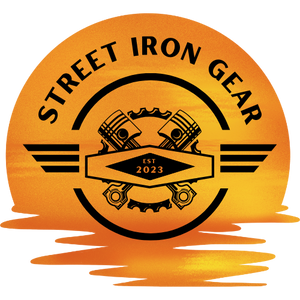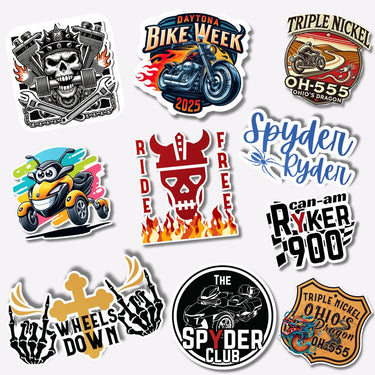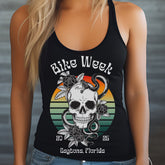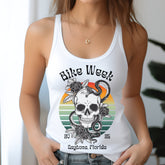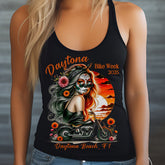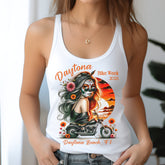The world of motorcycle helmets is a bit like trying to pick out a new car in a packed dealership—so many options, so many features, and everyone’s got an opinion. But unlike a car, a helmet isn’t just about comfort or style; it’s the ultimate guardian, the one piece of gear that stands between you and a really bad day. For me, riding is all about freedom and being present, but that freedom comes with a responsibility to protect yourself. My husband, with his 40+ years on two wheels, has seen helmet technology evolve from glorified brain buckets to sophisticated safety devices. I’ve gone from dirt bike helmets as a tomboy to a full-face lid on my cruiser, and now enjoy the open-air feel with eye protection on my Can-Am Spyder. Choosing the right helmet is a deeply personal decision, but it always starts with safety and understanding what riders are truly raving about. This guide dives into the top contenders, breaking down what makes them popular and why they might be the perfect fit for your next ride.
Helmet Types 101: Finding Your Fit
Before we jump into specific models, it’s crucial to understand the main types of helmets available. Each offers a different balance of protection, ventilation, and rider experience. Choosing the right type is like picking the right tool for the job—you wouldn't use a screwdriver to hammer a nail.
Full-Face Helmets
These are the champions of protection, offering coverage for your entire head, face, and chin. They are generally the safest option, providing excellent impact resistance and wind noise reduction. They're a favorite for sport bike riders, touring enthusiasts, and anyone prioritizing maximum safety.
Modular (Flip-Up) Helmets
Modular helmets offer the best of both worlds: the full-face protection of a standard helmet, but with a chin bar that can pivot up and back, allowing you to talk, drink, or get some air without removing the entire helmet. They're incredibly popular with touring riders, commuters, and even Can-Am Spyder riders who want a versatile option.
Open-Face (3/4) Helmets
These helmets cover the top, back, and sides of your head, leaving your face exposed. They offer a greater sense of freedom and better airflow, often favored by cruiser riders and those who prefer a classic look. However, they provide no protection for your face or chin. Eye protection (goggles or a visor) is essential with this type.
Half Helmets
Offering the least amount of coverage, half helmets protect only the very top of your head. They are lightweight and provide maximum airflow, appealing to riders who prioritize a minimalist look and feel. Like open-face helmets, they offer no facial protection, and eye protection is mandatory.
The Safety Standard: DOT, ECE, and Snell
When it comes to helmets, safety isn't just a suggestion; it's a regulated requirement. These certifications aren't just stickers; they represent rigorous testing to ensure a helmet can actually protect your most valuable asset.
-
DOT (Department of Transportation): This is the minimum legal standard for helmets sold in the U.S. It signifies that the helmet meets certain impact, penetration, and retention tests. Always look for the DOT sticker.
-
ECE (Economic Commission for Europe): Considered a higher standard than DOT, ECE 22.05 (or the newer 22.06) is the mandatory standard for helmets used in over 50 countries, including most of Europe. ECE testing is generally more comprehensive, including additional impact points and shell rigidity tests. Many helmets meet both DOT and ECE.
-
Snell: This is a voluntary, non-profit standard that is often considered the gold standard for helmet safety, especially in racing. Snell-certified helmets undergo even more stringent and aggressive impact tests than DOT or ECE. While not legally required, a Snell certification indicates an extremely high level of protection.
Top Contenders: Helmets Riders Are Buzzing About
Let's dive into some specific helmets that have earned rave reviews for their combination of safety, comfort, and features. These are the ones that riders consistently talk about, whether they're on a two-wheeler or a three-wheel Can-Am.
1. Shoei RF-1400 (Full-Face)
The Shoei RF-1400 is an undeniable leader in the full-face helmet category. Shoei has a legendary reputation for quality, and the RF-1400 carries that torch. It's the successor to the incredibly popular RF-1200, and Shoei somehow managed to make it even better. Riders rave about its aerodynamic design, which significantly reduces buffeting and wind noise, making long rides less fatiguing. This is a big deal, because riding for hours can be as much about mental stamina as physical. It features an advanced ventilation system that keeps you cool, even on hot days, and a comfortable, moisture-wicking interior that's completely removable and washable. For those who prioritize top-tier protection, quietness, and a premium fit, the RF-1400 is often the benchmark. It's DOT and Snell M2020D certified, so you know it means business.
2. Scorpion EXO-R420 (Full-Face)
For riders looking for serious protection without breaking the bank, the Scorpion EXO-R420 is consistently one of the most highly recommended full-face helmets. This helmet punches well above its weight class. It's incredibly popular for its Snell M2020D certification at a price point where many helmets only offer DOT. This means it has undergone very rigorous testing, giving riders a huge boost in confidence. The EXO-R420 features a lightweight polycarbonate shell, an optically clear anti-fog face shield, and a comfortable interior that’s also removable and washable. While it might not be as whisper-quiet as the Shoei, its exceptional safety rating for its value makes it a go-to choice for new riders, commuters, or anyone who wants robust protection without the premium price tag. It's a testament to the fact that top-tier safety can be accessible.
3. Sena Outrush R (Modular with Integrated Bluetooth)
Modular helmets are a fantastic option for riders who appreciate versatility, and the Sena Outrush R offers a compelling package by integrating Bluetooth communication directly into the helmet. This means no fiddly clamps or external units—the speakers, microphone, and controls are built right in, creating a sleek profile. It's DOT and ECE certified, ensuring a high level of protection. Riders love the convenience of hands-free communication for talking to passengers (my husband and I are mainly day-trippers, so this is a great feature for us), GPS navigation, or listening to music. The modular design is perfect for quick stops, allowing you to flip up the chin bar to talk without removing your helmet, which is incredibly convenient for Can-Am riders who often engage with their surroundings more readily. It features a drop-down sun visor, a comfortable fit, and easy-to-use controls, making it a stellar choice for the connected rider.
Choosing a helmet is one of the most important decisions a rider makes. It’s not just an accessory; it’s a vital piece of safety equipment. Whether you opt for the ultimate protection of a full-face like the Shoei RF-1400, the incredible value of the Scorpion EXO-R420, or the integrated convenience of the Sena Outrush R, the key is to ensure it meets safety standards, fits properly, and matches your riding style. Invest wisely, because your head is worth it.
